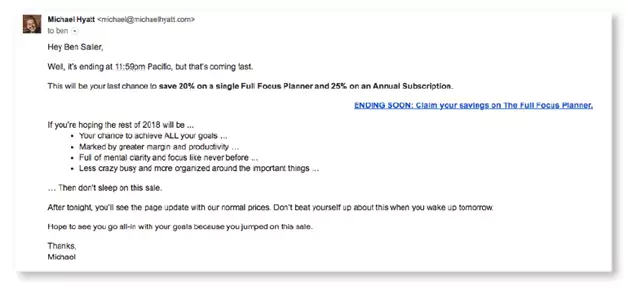Email continues to be one of the best methods for marketing your company even after all these years — and its versatility is evergrowing. You may use it to increase client loyalty, gather crucial feedback, announce new features, foster trust, reduce churn, and a whole lot more.
But since so many emails are sent every day, getting through the crowd and targeting your business objectives via email becomes difficult.
If you’re looking for ways to increase the results of your email marketing campaigns, you’ve come to the right place. Explore our top 5 email marketing tips — from email automation to proper timing and much more!
1. Implement automation
Let’s face it: without automation, email marketing won’t produce the renowned outcomes. You lose out on money if automation isn’t used. On the contrary, if you use various email automation hacks, you can benefit by:
- The rate of conversions rising
- Increasing effectiveness
- Enabling you to scale at no extra effort
In addition to these key benefits, you also get more time to devote to strategic activities, while more effectively pursuing your business goals.
Utilizing platforms like Campaign Monitor, Convertkit and Selzy makes automation in email marketing simple. The latter lets you automate bulk email campaigns with an ability to send up to 15000 personalized messages at once.
With the use of such programs, you can build automated emails based on various interactions with your website.
For instance, when someone opens your email, clicks on a link, or makes a purchase from you — it triggers a chain of automated email campaigns based on your desired purpose. This eliminates the requirement for manual sending — and lets you focus on strategy instead of execution.
2. Make use of segmentation
Email can be used for any number of marketing purposes: to welcome new customers, guide them through your funnel, announce feature releases, share special promotions, and more. But you can only make use of these strategies by segmenting your list.
While there are numerous ways to clusterize your audience, the typical ways include segmentation by:
- Demographics: Use your CRM to pull a list of emails based on a specific location.
- Engagement: You might want to re-send or send out a second, follow-up email to subscribers who didn’t open your first one.
- Stage of the customer journey: Personalize your offers to new customers, while prioritizing retention campaigns for longer-term clients.
- Source: Take into account which form on your website your subscribers filled out to give you their contact info.
Consider all these segmentation criteria ro properly set up rules and conditions in your automated email platform. By the way, Selzy offers 70+ segmentation criteria for your campaigns.
3. Add a personal touch
People desire a sense of identity beyond their status as a number. This explains why personalization brings so many advantages to email performance:
- Up to a 50% increase in open rates can be achieved with personalized subject lines.
- A return on investment for personalized emails is 122%.
- Comparing birthday emails to ordinary promotions can increase revenue per email by 342%.
But how do you personalize your email campaigns? First and foremost, include the recipient’s name in your emails.
Second, refer to specific personal experience, pain points, challenges, and needs of your audience.
Third, you should speak the language of your audience and establish a connection with yourself as a person, not a business representative. Here is a great illustration of this approach in a personalized plain-text email from Michael Hyatt:

4. Make emails mobile-first
Since the majority of people check their emails on their phones, making emails mobile-friendly is essential.
If your email advertises specials or discounts, it must be mobile-friendly. For instance, any product images or sales information should be easily accessible on the mobile device.
Additionally, it’’ essential to provide your potential customers with the option to view your brand’s website on their phone in their preferred mobile browser by clicking on the promotion, link, or image.

Here are some extra tips for making your emails mobile-first:
- Place key links at the top and not the bottom of the page. This will increase the likelihood of these links being seen and opened.
- Use text only when necessary. Make sure your email copy doesn’t take more than 20% of your email design, otherwise it will feel overwhelming.
- To compensate for the typically slower download rates of mobile devices, decrease the file size of your photographs. Programs like TinyPNG will assist you in reducing file size.
For the greatest user experience, make sure the CTA buttons and links are larger than 45–57 pixels.- Experiment with various font and margin sizes to find out what design lifehacks resonate with your audience the most.
5. Find the ideal moment
There’’ no such thing as the universal time for sending an email.
Why so? Well, because the optimal email sending time will vary depending on your users’ location, behavioral patterns, schedule, as well as interactions with your site — such as the time of last visit, last action, last purchase, and so on.
For measuring your email efficacy, using Google Analytics is a must. In its Goal conversion area, you can track bounce rate, exit pages, and other important metrics.
When you send emails taking into account people’s schedules, you should consider other essential factors too. Reduced open rates, for instance, can be seen on holidays, late into the evening, as well as on Monday morning and Friday evening. Knowing how specific time of the day, week, or month can influence your campaign results, is key to successful email marketing.
Bonus tips to start your email marketing campaign
You are therefore preparing your email marketing strategy. What do you start with?
In order to help you get started and get the desirable outcomes, consider the following:
- Emails should be brief and to the point. Keep your emails between 60 and 200 words long because long emails are tiresome to read.
- Prioritize photographs of your items or services over text since, especially in email communication, people enjoy seeing things.
- Remember that social proof aids in persuading customers that your offer is trustworthy and worthwhile. Sharing resources from industry experts or influencers who use your brand counts as this.
- Remember that after reading your material, readers want to know where to go next. Additionally, since most emails are opened on mobile devices, each email must have a clear CTA. No matter what it leads to — a landing page, feature description, or a recent update on your blog — the desired action should be clear to your target user.
- Make sure you can send frequent emails. However, remember that even once a week is insufficient. Which is why the use of automated email services is a must.
